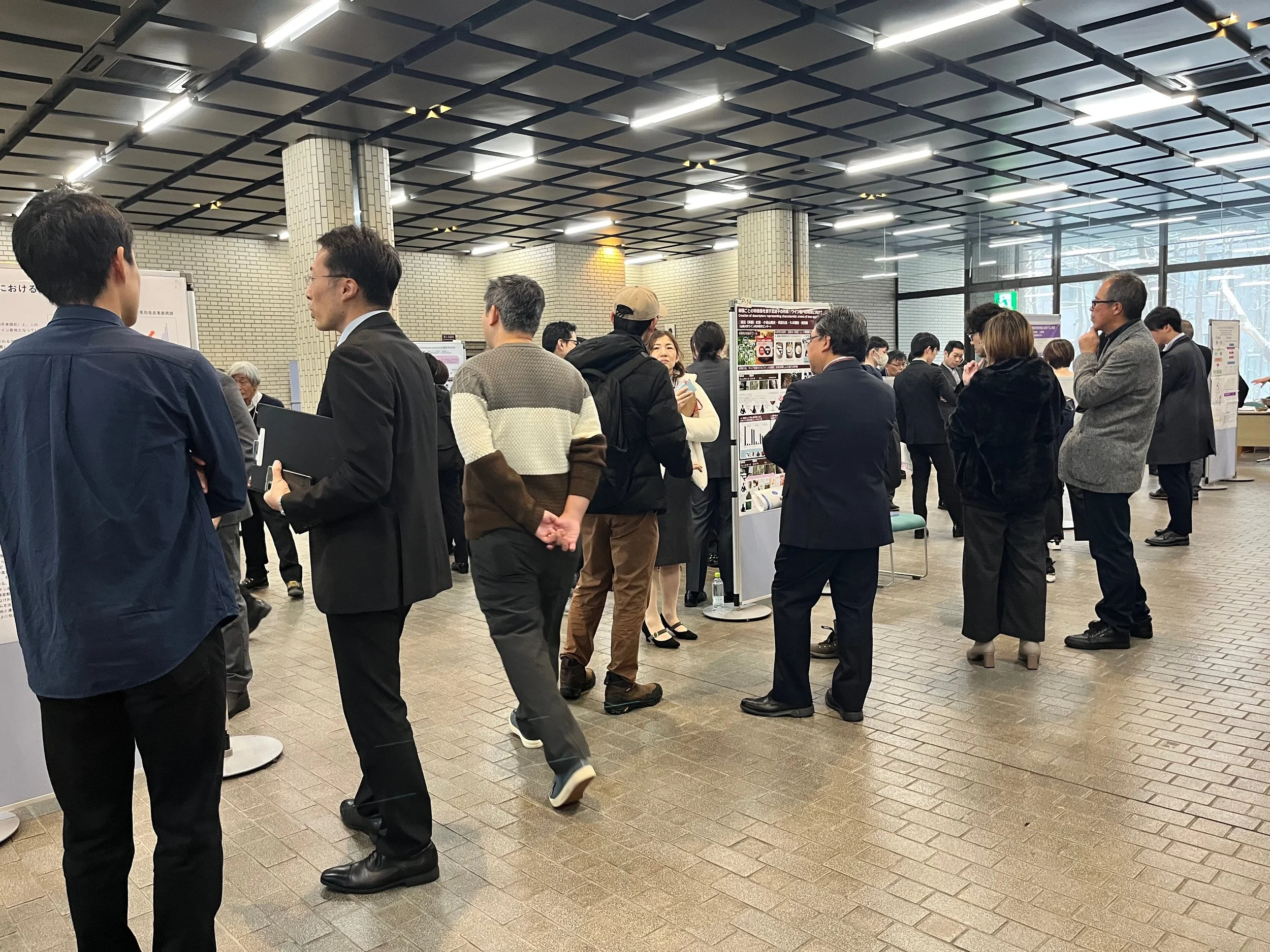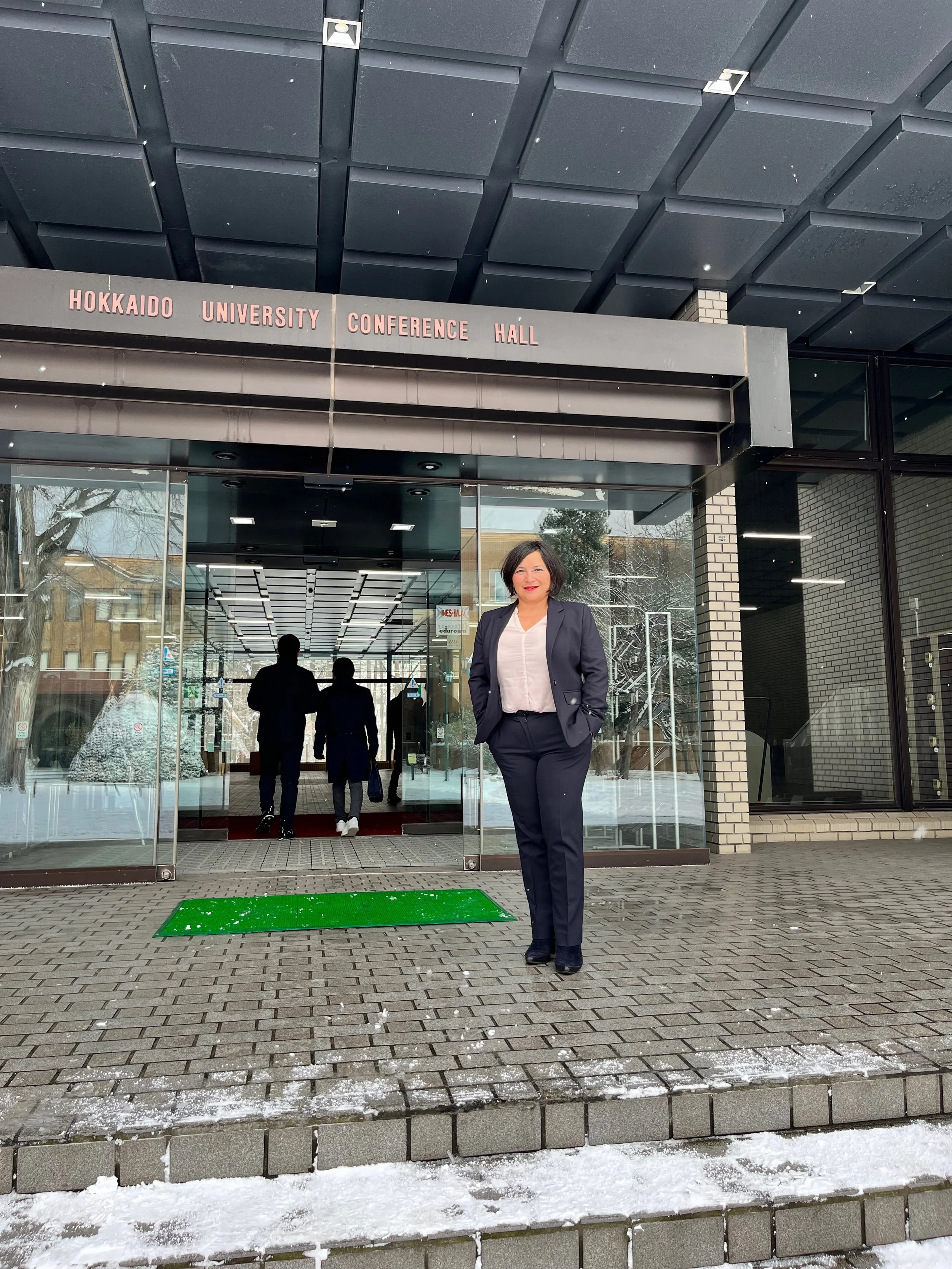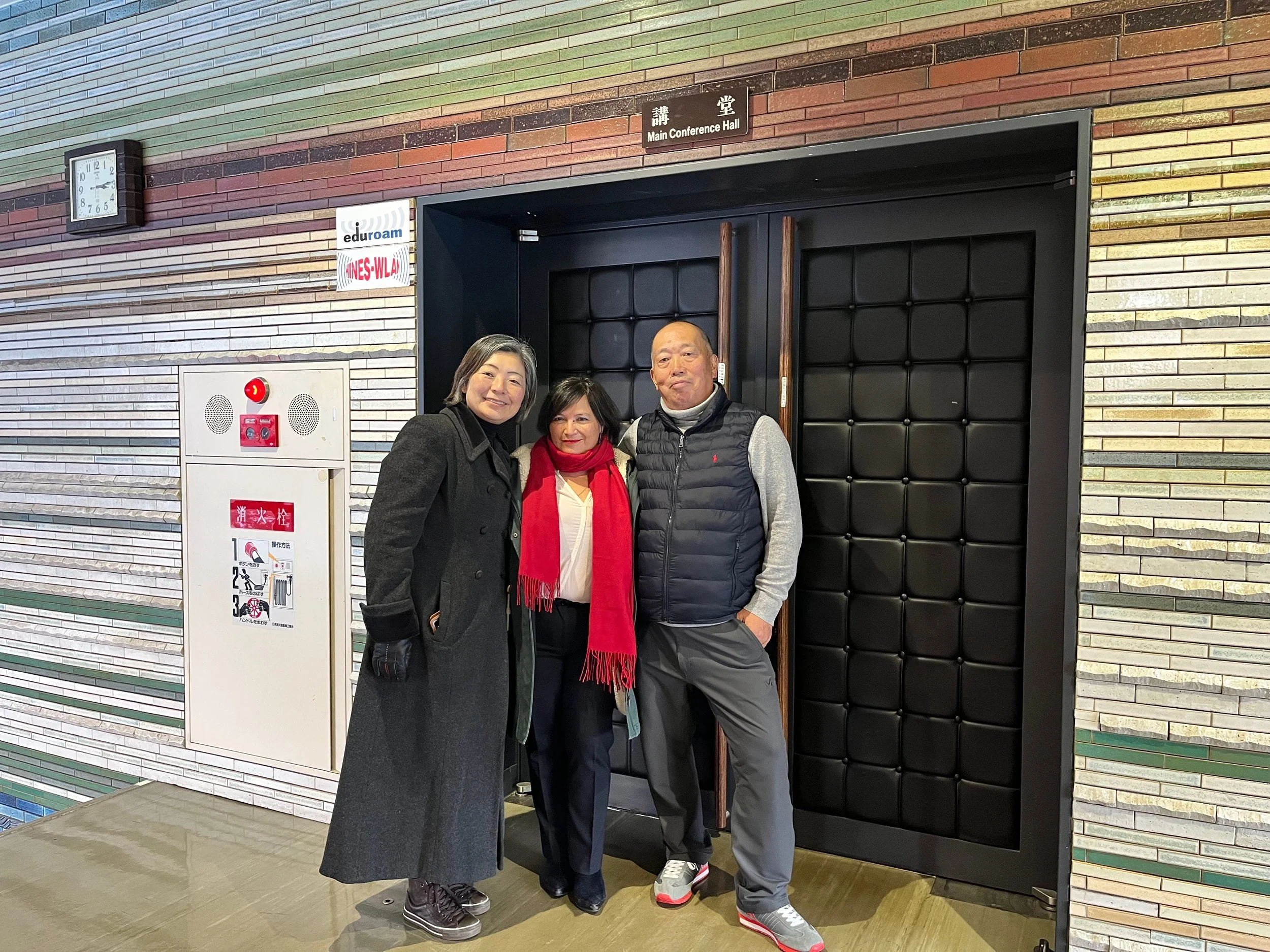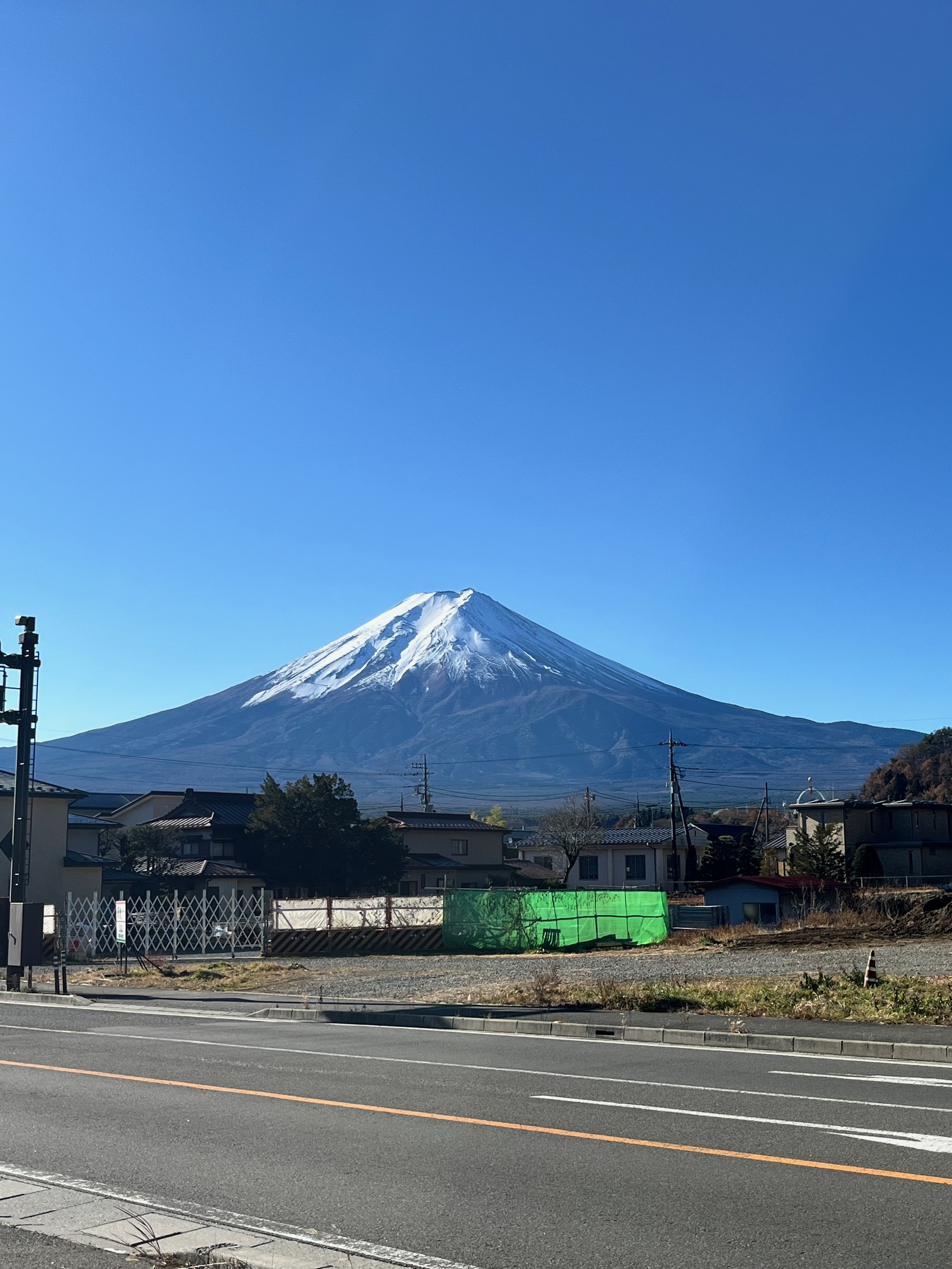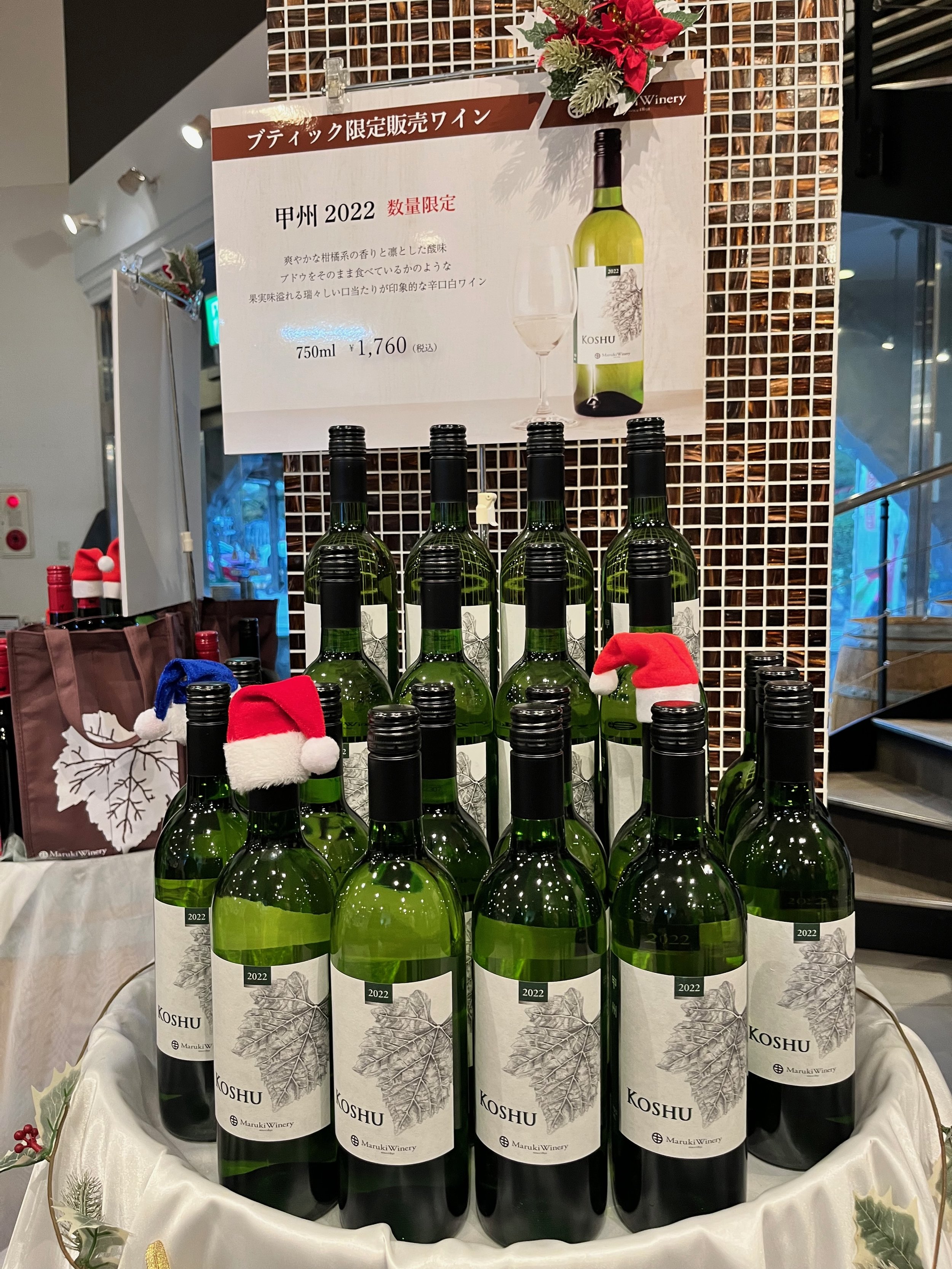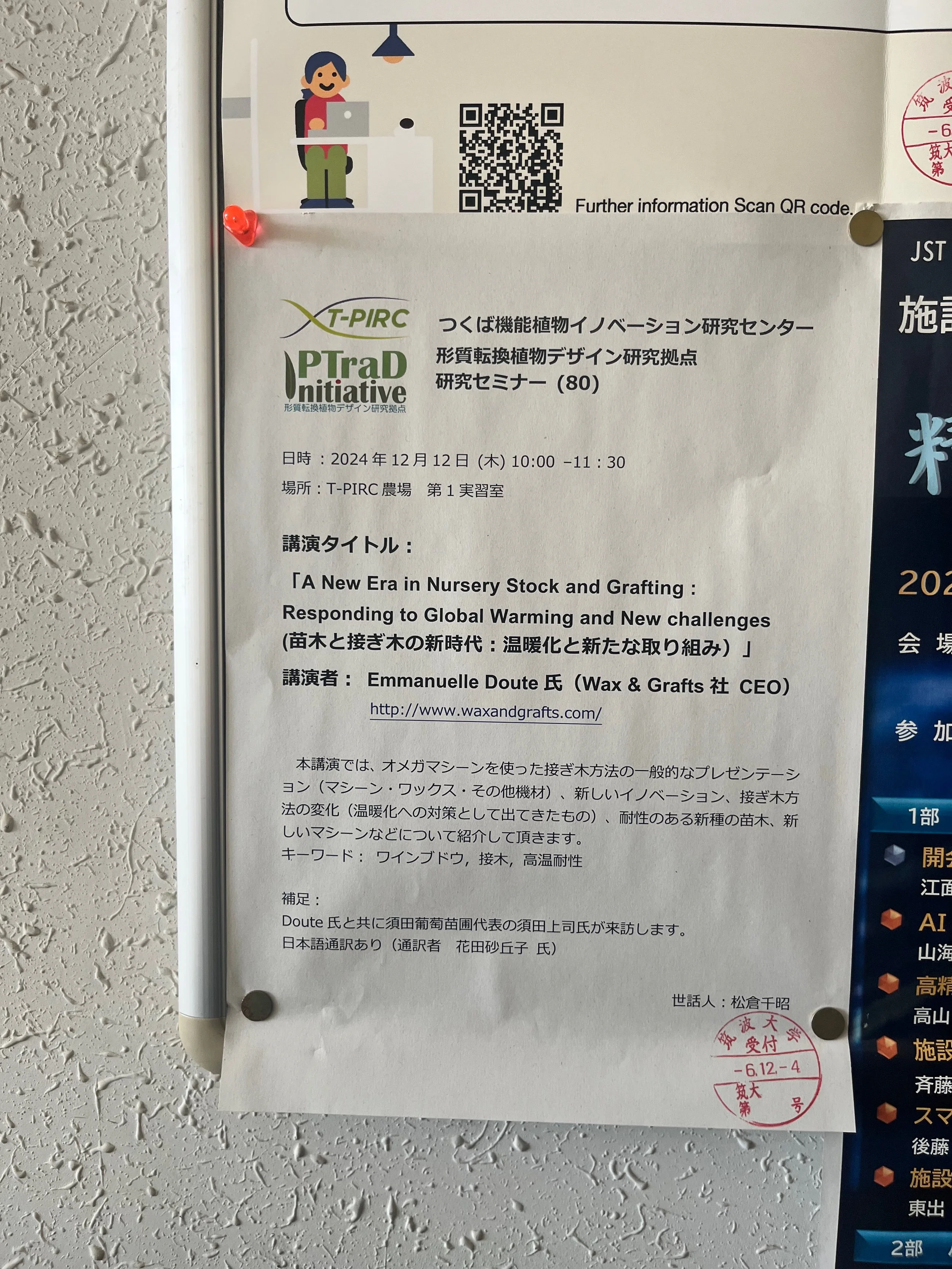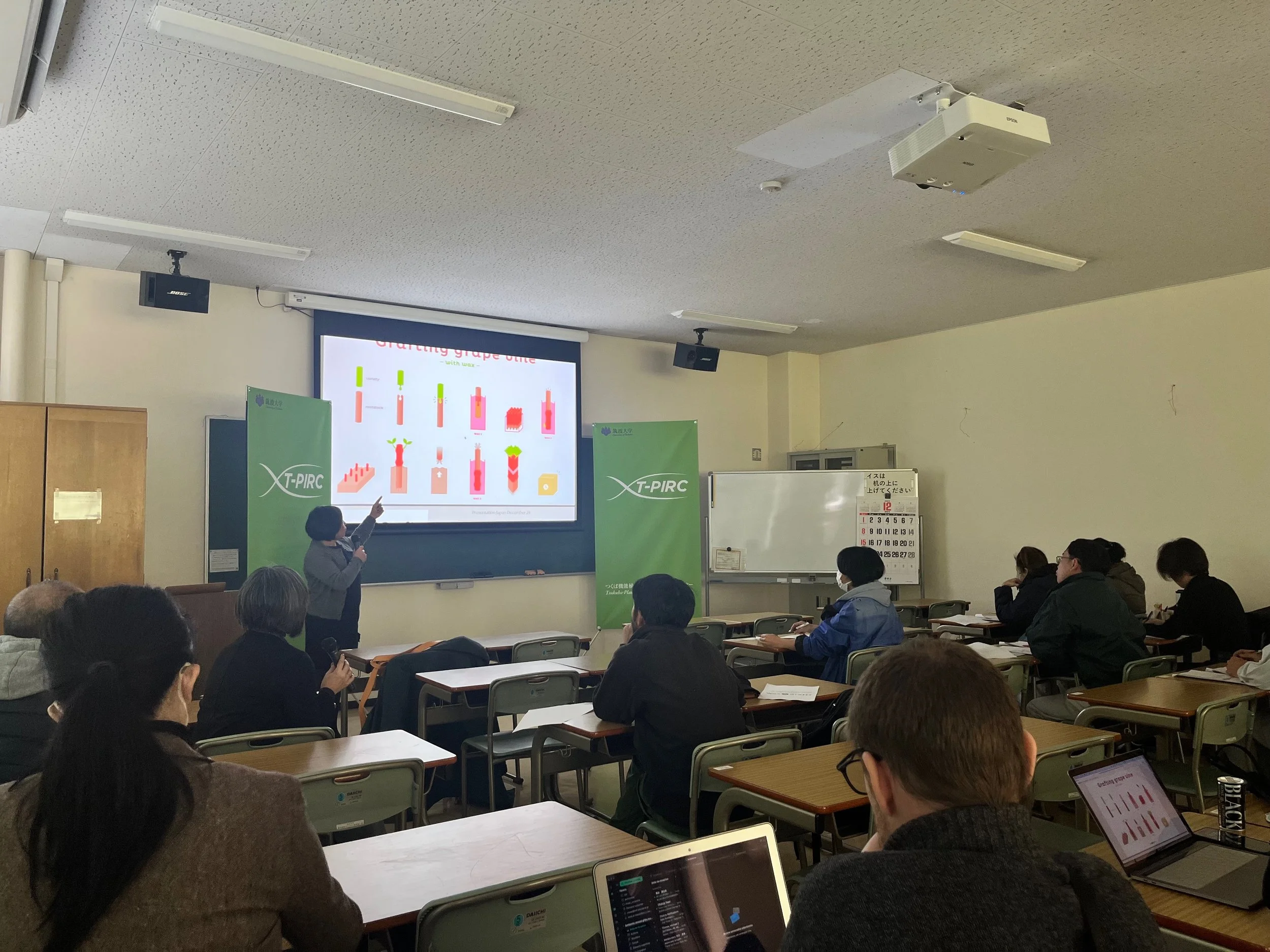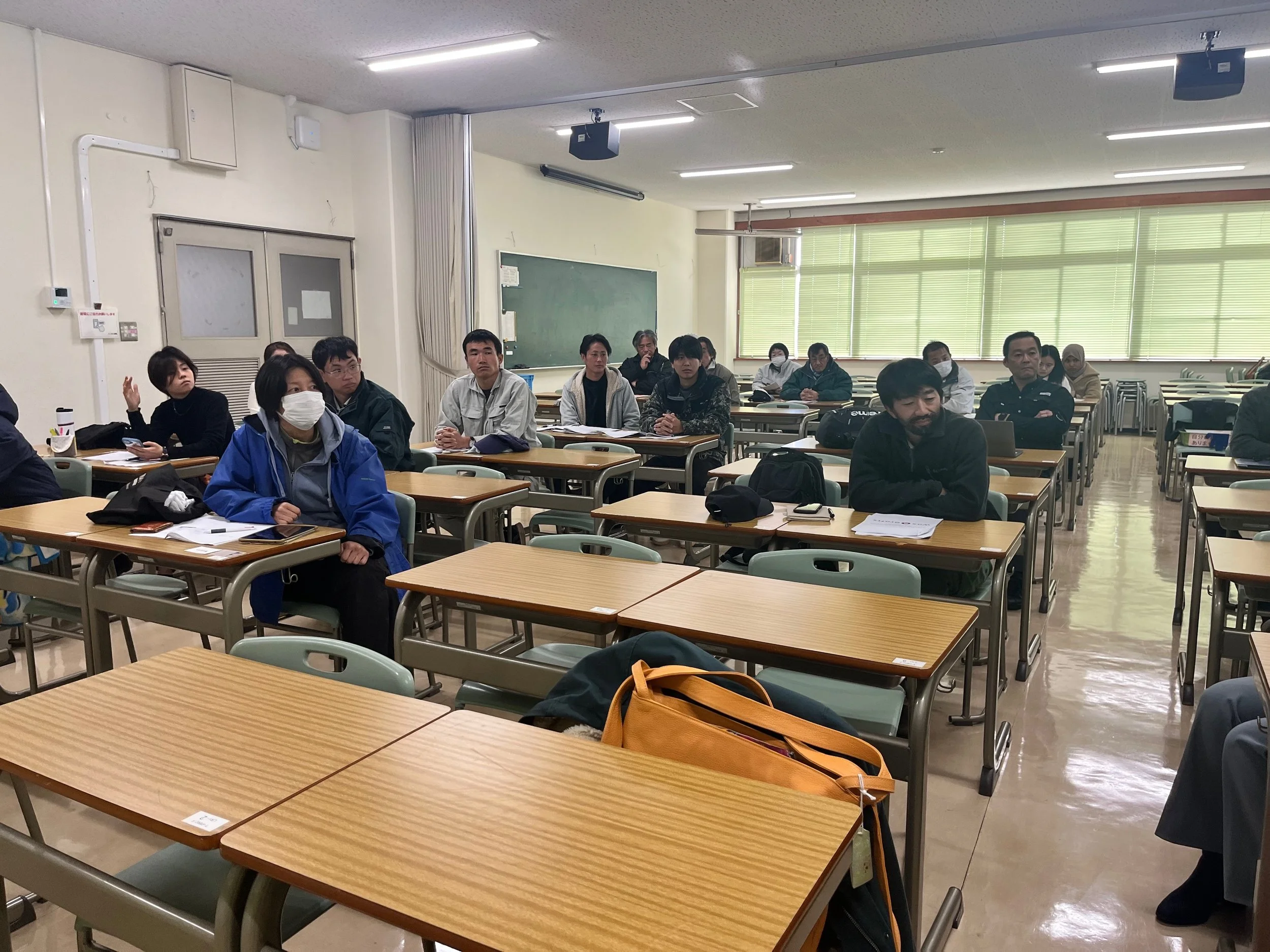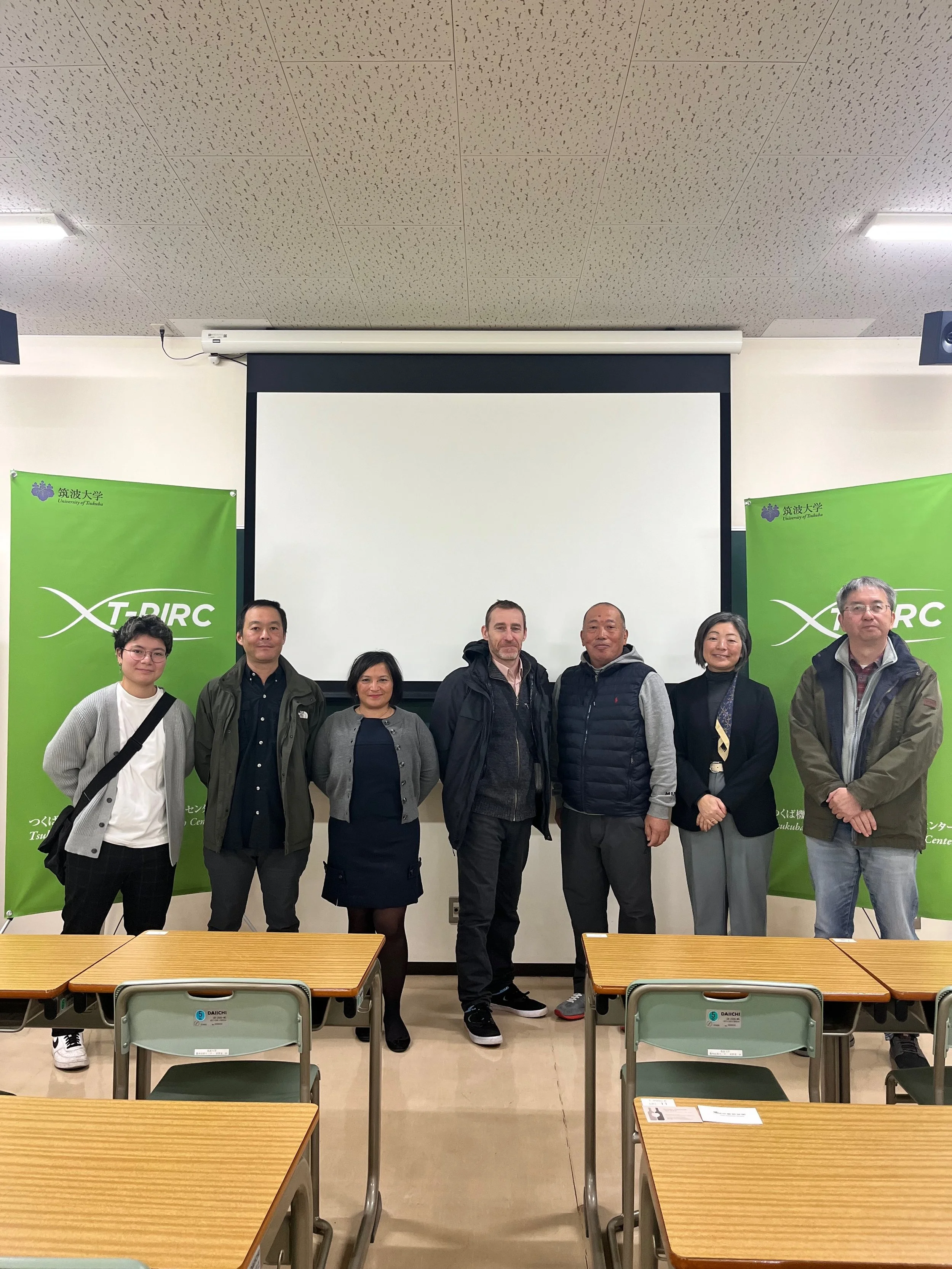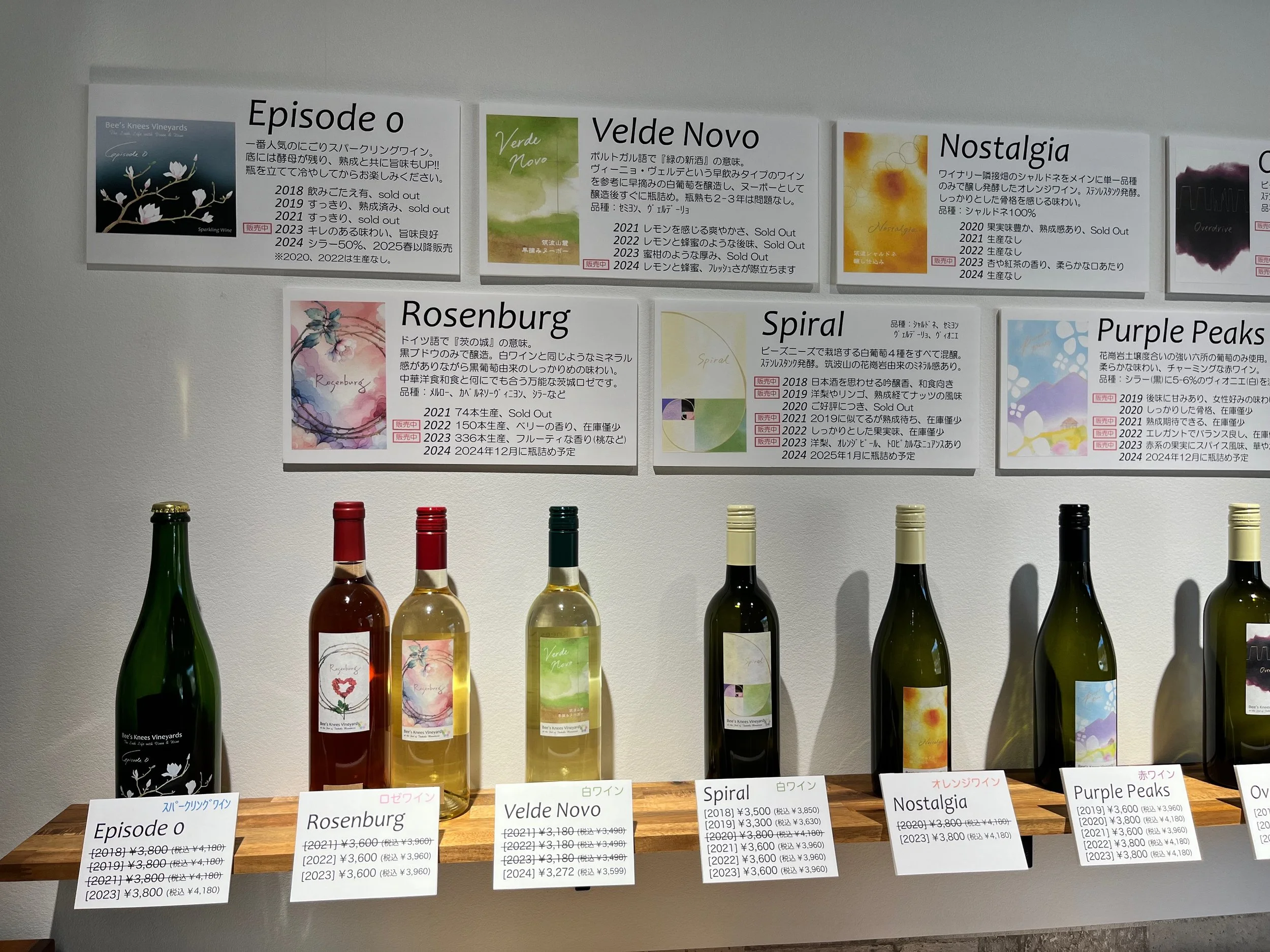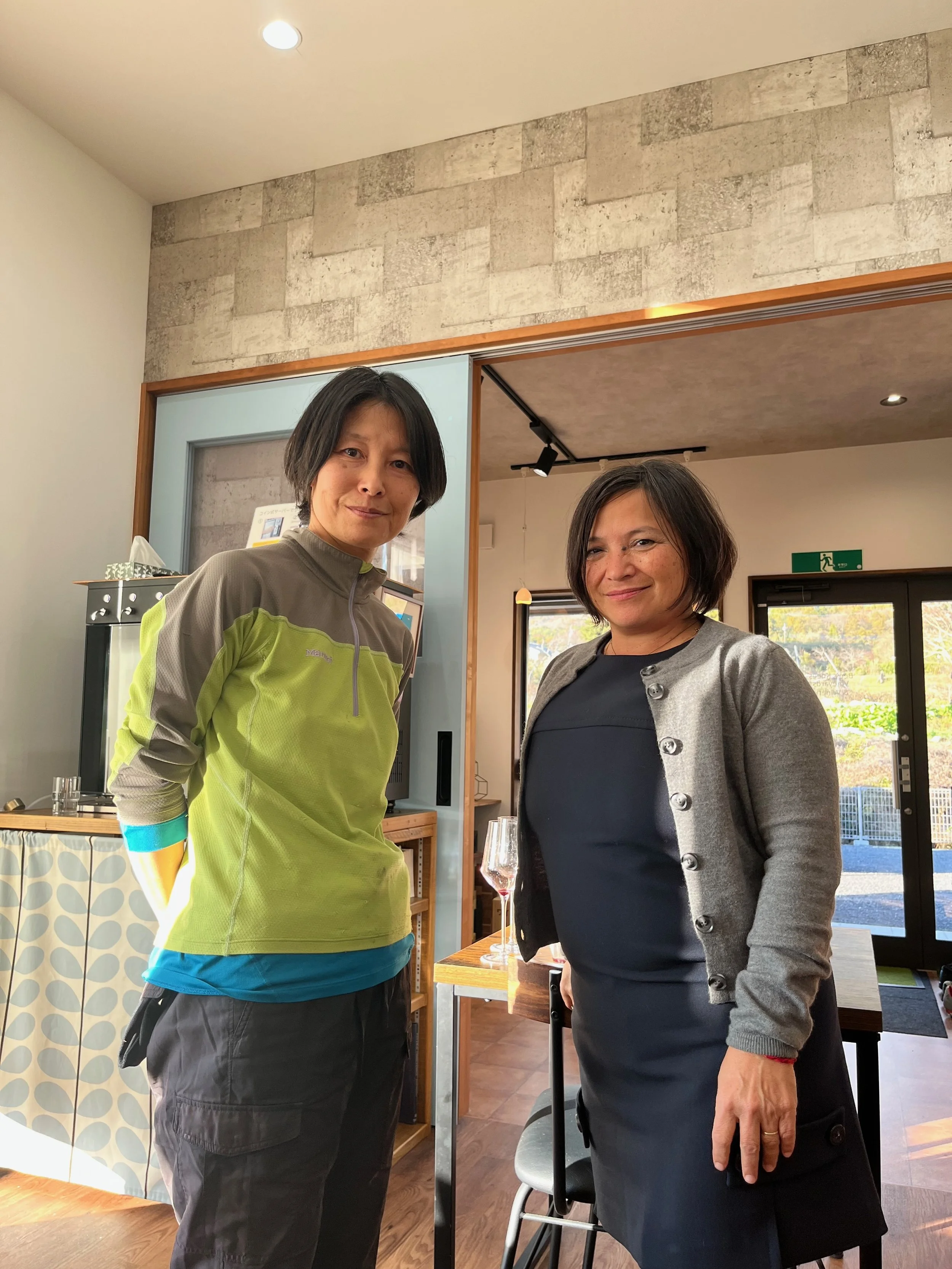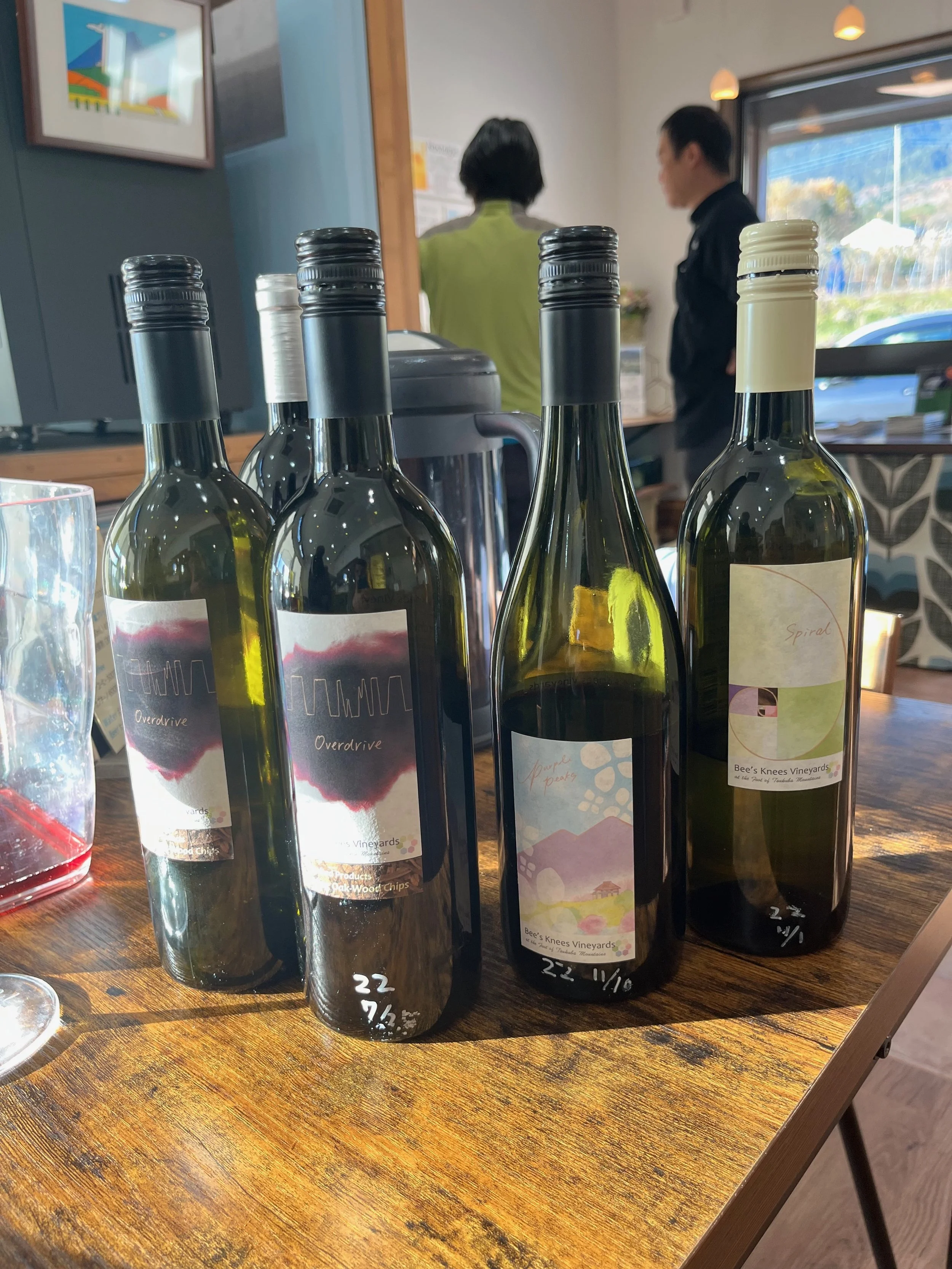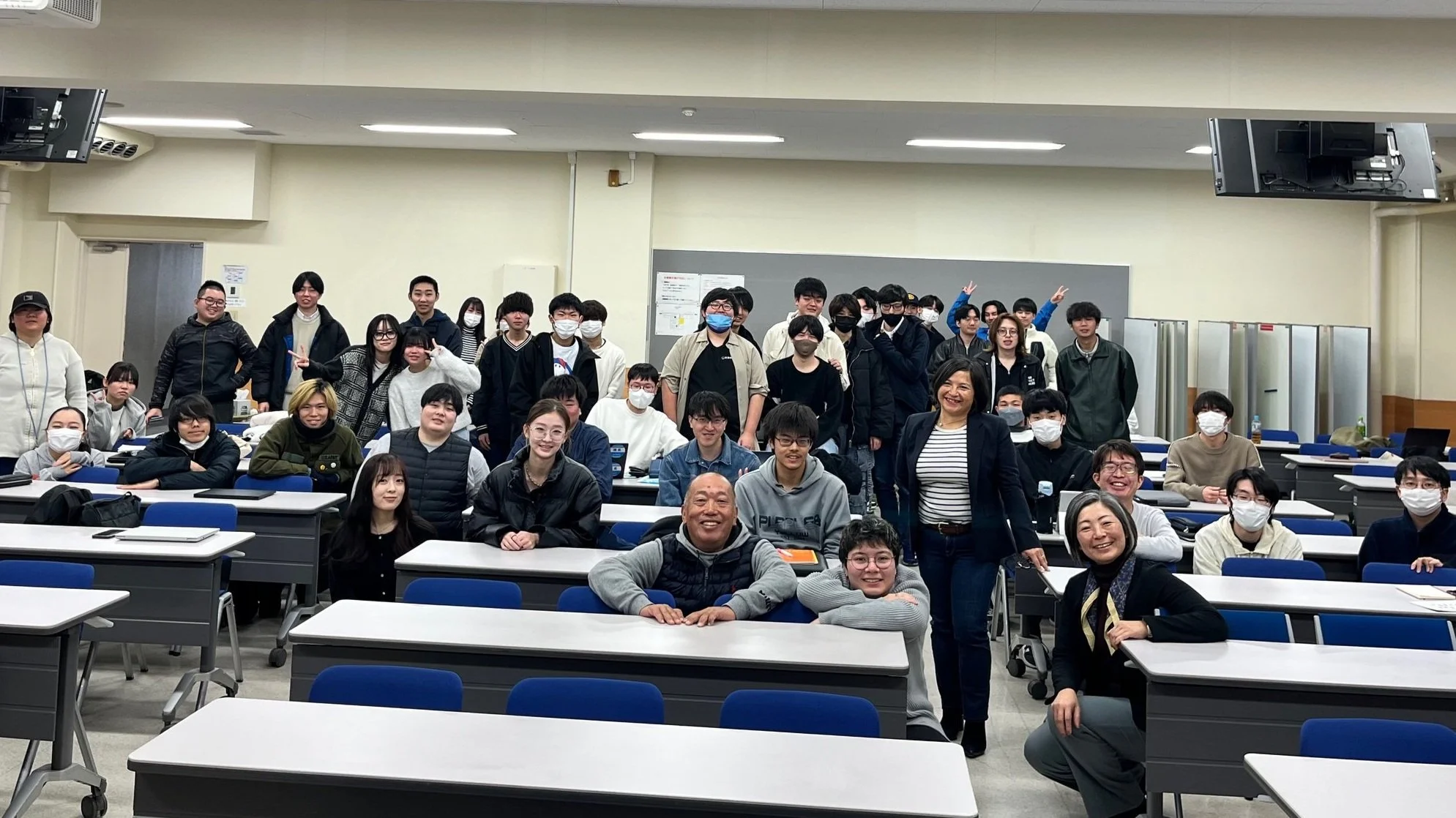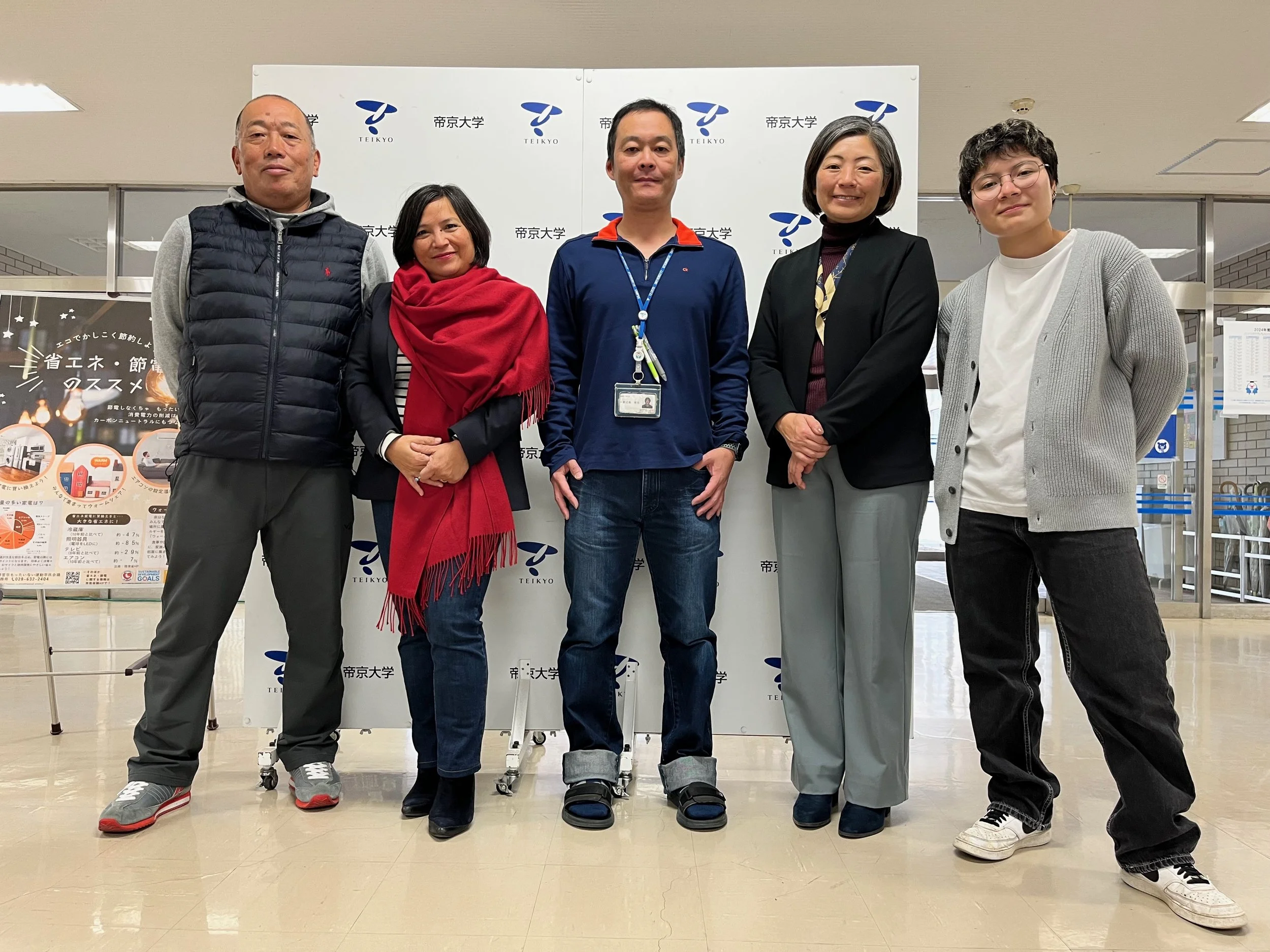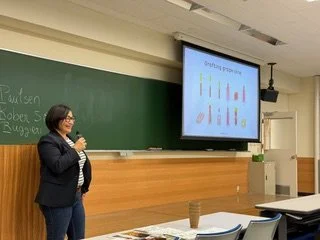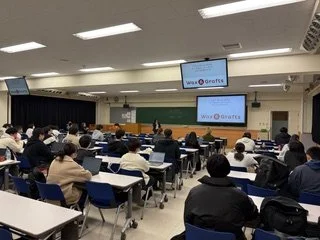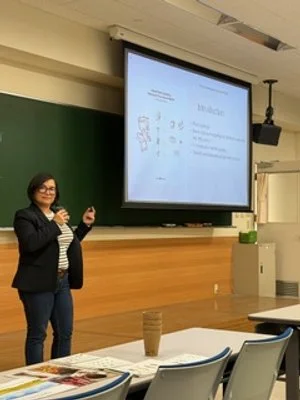From December 5 to 14, 2024, we embarked on an enriching visit to Japan, invited by Teikyo University professor and nursery owner Joji Suda to speak at the ASAV Japan’s annual seminar. Traveling across Tokyo, Hokkaido, Yamanashi, and Utsunomiya, the trip highlighted the challenges and opportunities of this still relatively unknown market on the international stage.
During this journey, Mr. Suda has been an exceptionally welcoming host. We also greatly appreciated the assistance of Mrs. Sunako Hanada, a translator and former sommelier based in Bourgogne, who organizes tours for Japanese visitors.
Hokkaido, A Growing Wine Region
The journey began in Hokkaido with a conference at Hokkaido University as part of the ASEV’s Japanese branch (American Society for Enology and Viticulture), which was founded in 2005 to contribute to the development of the grape and wine industry in Japan from an academic perspective.
Our presentation provided an overview of the global vine nursery market, highlighting the growth potential of different producing regions. It also underscored the importance of resilient grape varieties to combat diseases like mildew while reducing pesticide use. Finally, it showcased innovative solutions within the nursery sector as key enablers of sustainable viticulture. The event gathered local viticulturists, researchers, and students, demonstrating the increasing interest in innovative nursery and grafting practices.
Hokkaido, with its favorable climate and promising terroir, has seen its number of wineries triple in ten years to 66 in 2024, so that it is now one of the leading wine-producing regions in Japan. The establishment of the Hokkaido Wine Platform in 2022 accelerated this growth, bringing together universities, government institutions, and wine industry professionals to foster research and development initiatives.
2. Yamanashi: The Birthplace of Japanese Wine
Moving on to Yamanashi, which remains the main destination for wine tourism, we met with Mr. Atsushi Mitsumori, CEO of Mitsumori Trading Co. Ltd, a century-old family business supplying equipment to nurseries and wineries.
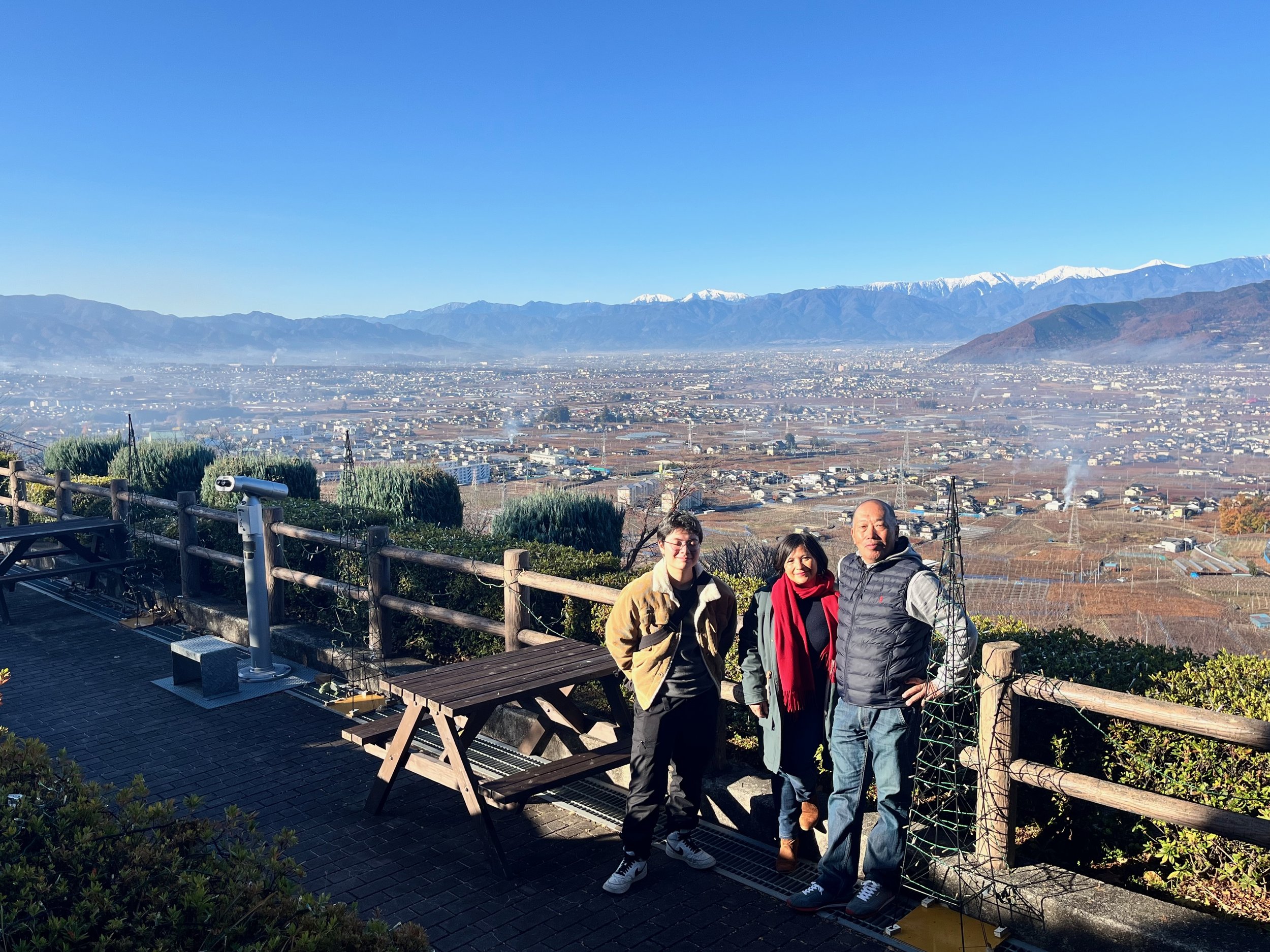
A visit to Maruki Winery, Japan's oldest winery founded during the Meiji era by Tatsunori Tsuchiya, provided insight into the region's deep-rooted wine culture. Tsuchiya introduced French viticultural techniques to Japan and pioneered wine production using the Koshu grape, a variety emblematic of the region. Other international varieties such as Chardonnay, Sauvignon Blanc, and Cabernet Sauvignon, Merlot and Petit Verdot also thrive here, benefiting from the region’s favorable climate.
We also toured Mr. Suda’s nursery, which practices stood out for their distinctive methods, tailored to local climates and grape varieties. These techniques are often unique compared to global standards, presenting opportunities for collaboration and mutual learning.
3. Tsukuba, Renowned Place for Agronomic Research
At the University of Tsukuba (one of the most prestigious universities in Japan), we had the opportunity to give another conference and keep addressing challenges of nursery viticulture in the face of climate change. Recognized for its excellence in agricultural research, this university collaborates closely with INRAe and the Bordeaux University through the Tsukuba Plant Innovation Research Center (T-PIRC).
“Wine grape growers from Tsukuba City also attended to your seminar that day, and they were all very interested in your talk. Students and the farm’s technical staff also had looked inspired.”
A visit to Bee’s Knees Vineyards and winery, located at the foot Mt. Tsukuba, showcased a vineyard managed by Ms. Imamura, who oversees the entire production process, from vine cultivation to wine marketing. From 2015 to 2017, 4,000 seedlings were planted on approximately 1.5 hectares.
4. Grafting is a Mandatory Subject for Students in Teikyo University
The final stop was in Utsunomiya for a conference at renowned Teikyo University, where the biosciences department trains future professionals in the field. Grafting techniques have been a mandatory subject for several years and teached by our host Mr Suda, emphasizing their importance for the future of Japanese viticulture.
“Thank you for visiting our university.
It was a wonderful lecture, and the students were very impressed.”
Between Tradition and Innovation, a Japanese Viticulture in Transition
Japan, with its 16,500 hectares of vineyards and around 200 wineries, is gradually developing its wine identity. While imported wines dominate the market (accounting for 70% of consumption), the rise of protected geographical indications (Yamanashi, Hokkaido, Nagano, Yamagata) and growing interest in indigenous grape varieties like Koshu signal a turning point.
Innovation is at the core of local strategies, from producing more sparkling wines to diversifying cultivated grape varieties and improving grafting techniques. Hokkaido, in particular, stands out as an attractive destination for international investors, exemplified by the establishment of Domaine de Montille, the first Japanese vineyard launched by a foreign producer.
This mission established valuable connections with key players in the Japanese wine industry and explored collaboration opportunities in plant material, grafting, and training the next generation of viticulturists. Although Japan's wine production remains modest, the country is positioning itself as an emerging force in global viticulture.
The exchange of knowledge during the seminar and the visits showcased the shared commitment to adapt to evolving challenges and innovate sustainably. We were glad to share our expertise in vine nursery grafting, so that we keep on inspiring practices worldwide 💚



